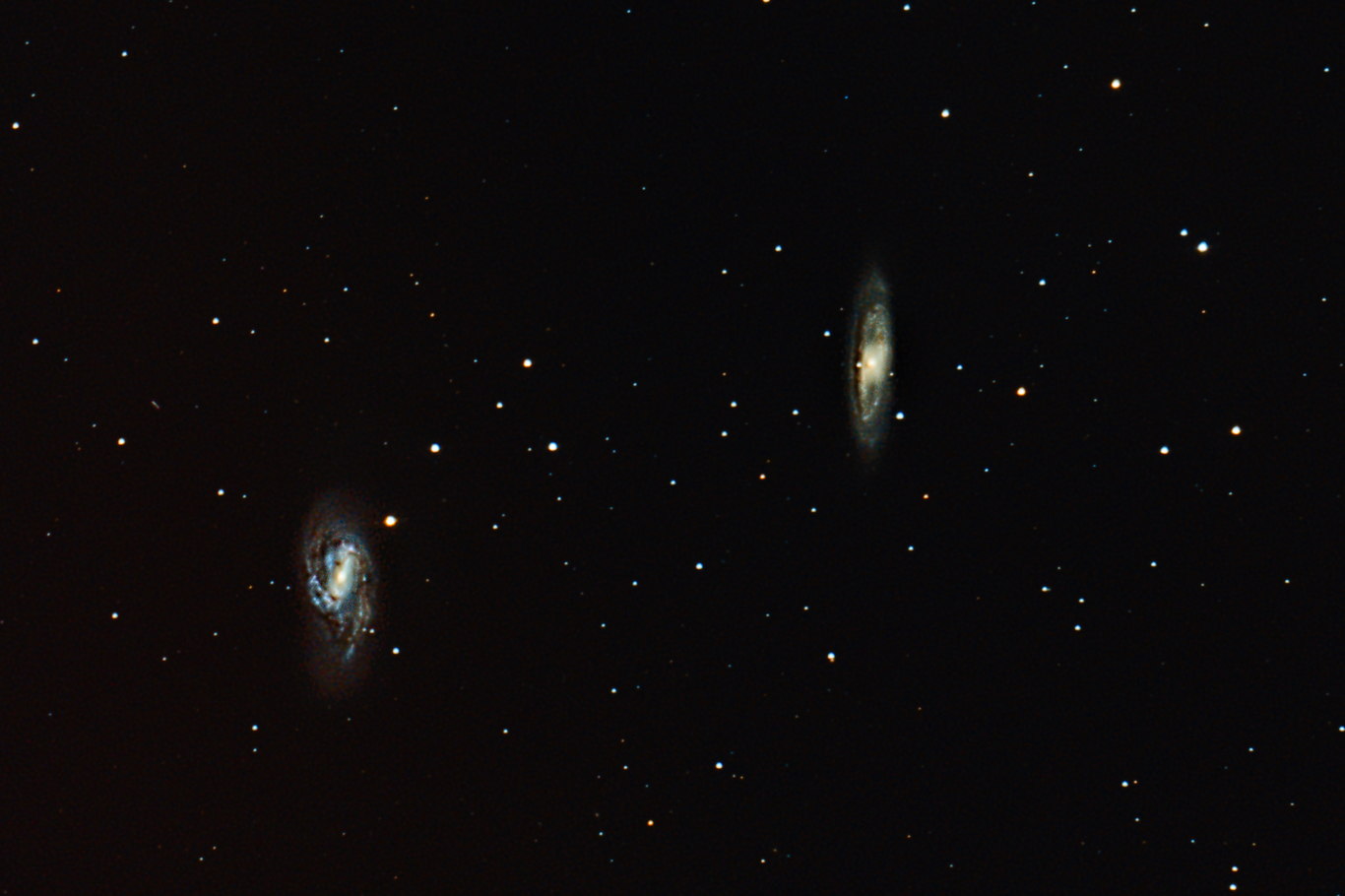
Target Details
Messier 65, to the right of the image, (also known as NGC 3623) is an intermediate spiral galaxy about 35 million light-years away in the constellation Leo. The galaxy is low in dust and gas, and there is little star formation in it, although there has been some relatively recently in the arms. The ratio of old stars to new stars is correspondingly quite high.
Messier 66, to the left of the image, (also known as NGC 3627) is an intermediate spiral galaxy about 36 million light-years away in the constellation Leo. M66 is about 95 thousand light-years across with striking dust lanes and bright star clusters along sweeping spiral arms.
Messier 65 & 66 are part of the Leo Triplet, a small group of galaxies that also includes NGC 3628. As of 2015, four supernovae have been observed in M66.
Capture Details
Data captured 1st January, 2017.
36x 6 minute exposures at ISO800.
Equipment Details
Orion Europa 200
NEQ6 Pro
Nikon d7100
Skywatcher ST-80
QHY5L-II
Processing Details
This image was processed in Pixinsight & Lightroom.
